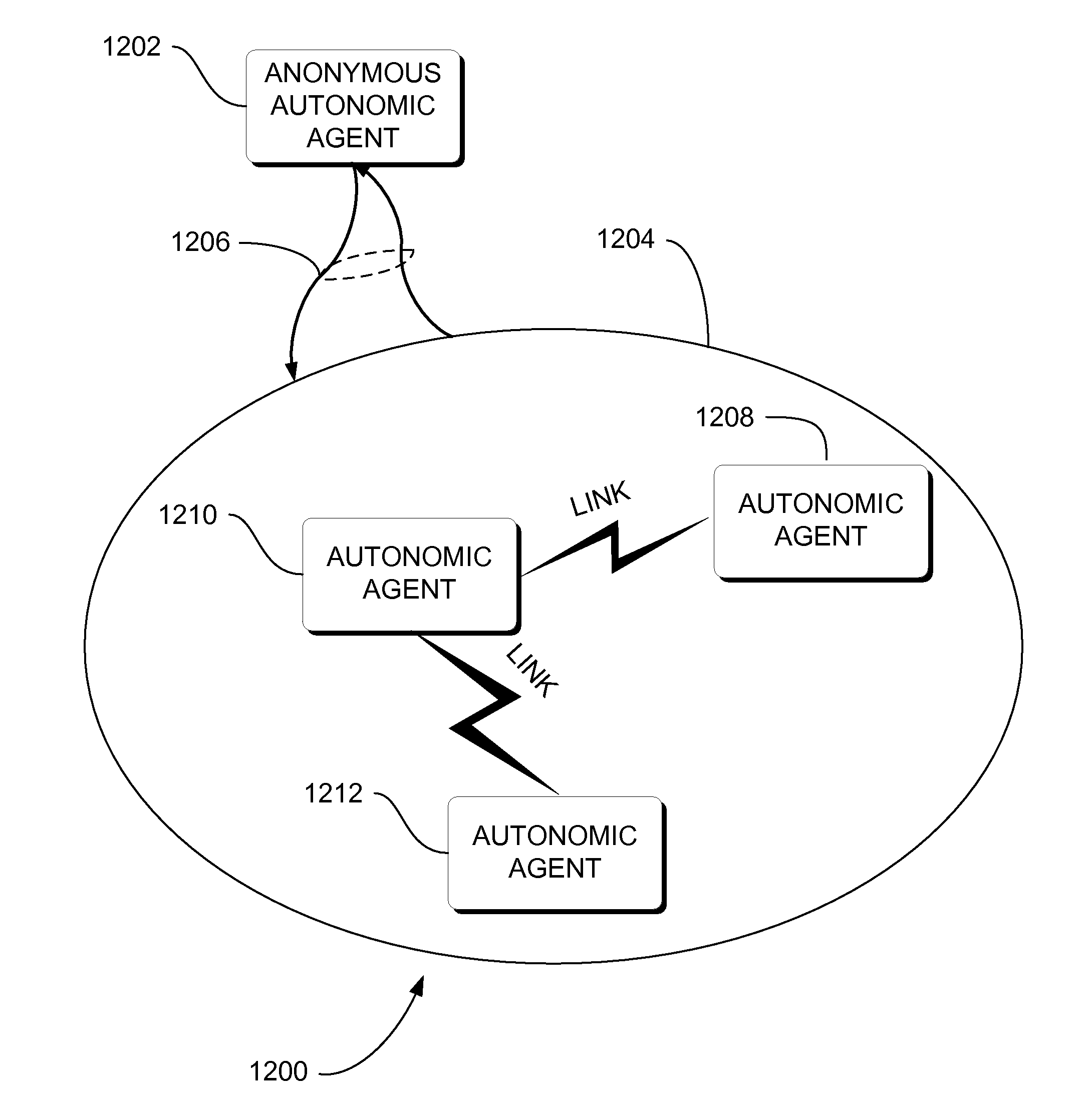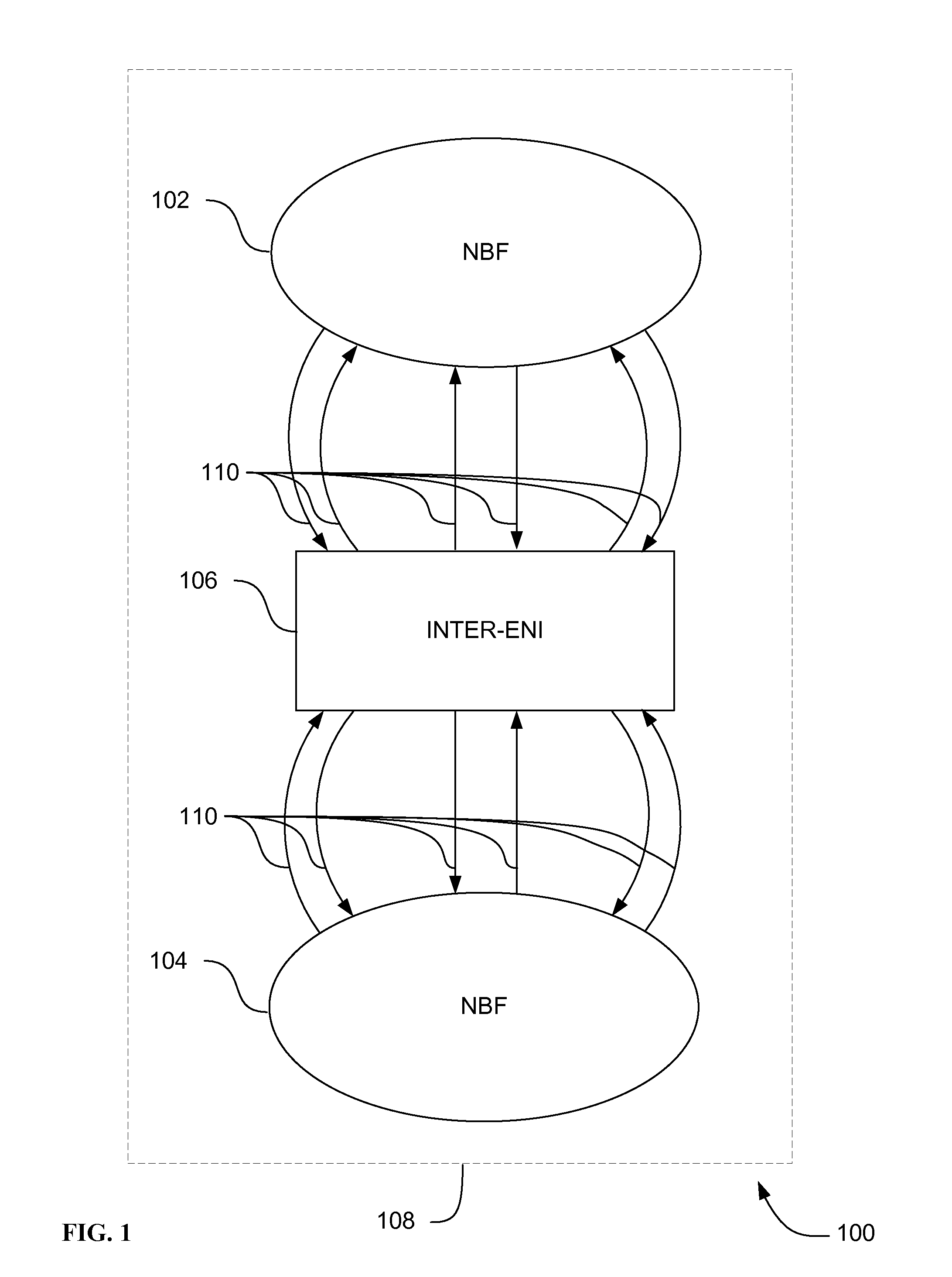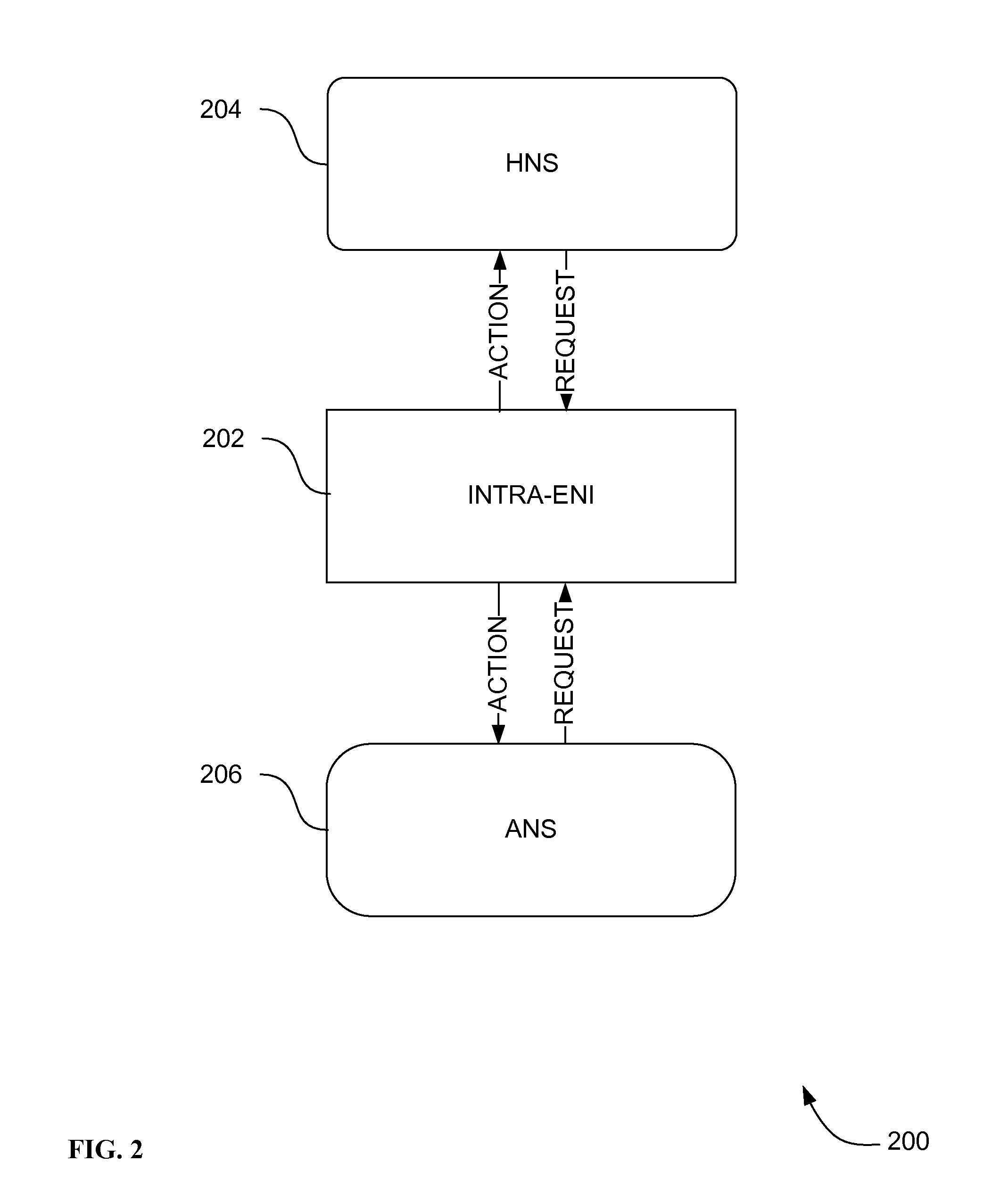Autonomic and apoptopic systems in computing, robotics, and security
a technology of autonomous and apoptopic systems and computing, applied in the field of artificial intelligence, can solve the problems of ants encountering a challenging situation, the operation of a particular autonomic spacecraft can be detrimental to the autonomic spacecraft, and the inactive workers and rulers can only participa
- Summary
- Abstract
- Description
- Claims
- Application Information
AI Technical Summary
Benefits of technology
Problems solved by technology
Method used
Image
Examples
Embodiment Construction
[0054]In the following detailed description, reference is made to the accompanying drawings that form a part hereof, and in which is shown by way of illustration specific embodiments that can be practiced. These embodiments are described in sufficient detail to enable those skilled in the art to practice the embodiments, and it is to be understood that other embodiments can be utilized and that logical, mechanical, electrical and other changes can be performed without departing from the scope of the embodiments. The following detailed description is, therefore, not to be taken in a limiting sense.
[0055]According to various embodiments of the present teachings, a computer-accessible medium is provided in a first autonomic device. The device can comprise: a computing device, a robotics device, a security device, or a combination thereof. The computer-accessible medium can have executable instructions of autonomic communication and the executable instructions can be capable of directin...
PUM
 Login to View More
Login to View More Abstract
Description
Claims
Application Information
 Login to View More
Login to View More - R&D
- Intellectual Property
- Life Sciences
- Materials
- Tech Scout
- Unparalleled Data Quality
- Higher Quality Content
- 60% Fewer Hallucinations
Browse by: Latest US Patents, China's latest patents, Technical Efficacy Thesaurus, Application Domain, Technology Topic, Popular Technical Reports.
© 2025 PatSnap. All rights reserved.Legal|Privacy policy|Modern Slavery Act Transparency Statement|Sitemap|About US| Contact US: help@patsnap.com



